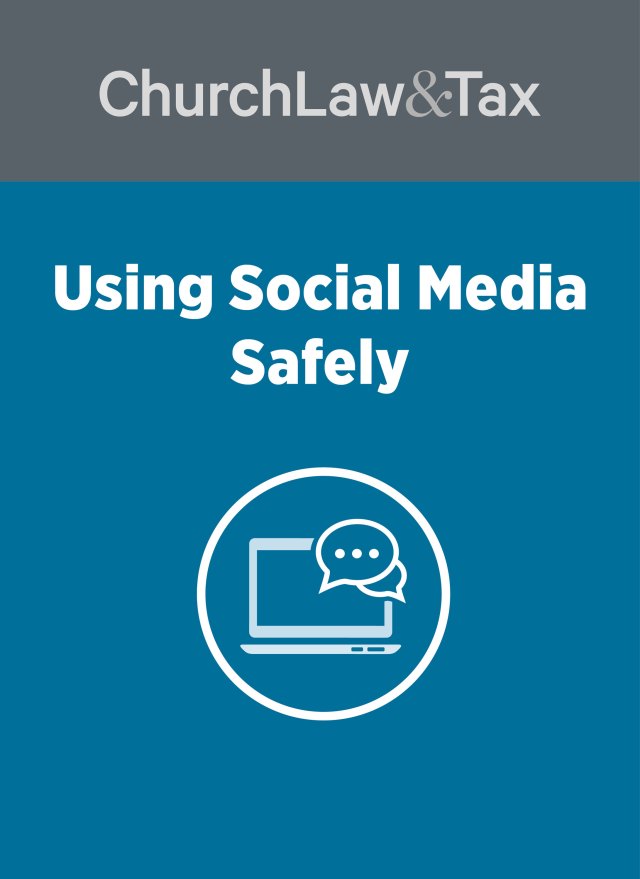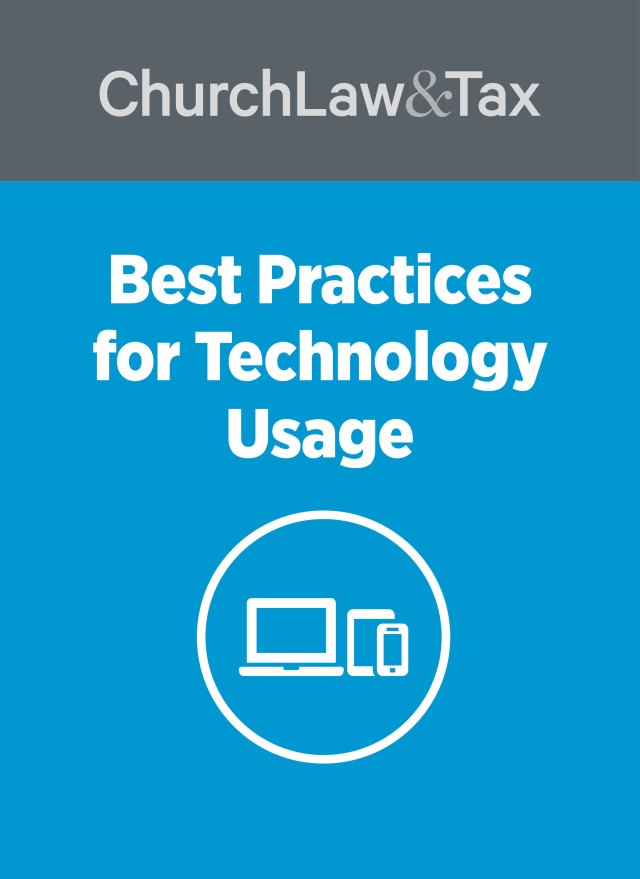Key point A church name is a valuable property right that is protected by the legal principle of unfair competition. Protection also is available under federal trademark law.
A federal court in Tennessee ruled that the "Seventh-day Adventist" registered trademark had not been lost by becoming generic, and therefore the Seventh-day Adventist Church could enjoin a dissident pastor from using the words "Seventh-day Adventist" in his church's name. The General Conference of Seventh-day Adventists ("General Conference") is an unincorporated association that represents the interests of the Seventh-day Adventist Church. Organized in 1863, it constitutes the official organization of the Seventh-day Adventist Church. The church grew out of several congregations that believed that Christ's Second Advent was imminent and that the Sabbath should be observed on the seventh day of the week. None of these early churches called themselves "Seventh-day Adventist" and it was not until the congregations came together to create a formal church structure that the name "Seventh-day Adventist" was chosen. Since the official formation of the church, the names "Seventh-day Adventist" and "SDA" have been used by the Seventh-day Adventist Church as the church's name, and as its trade name in advertising and publishing. The church today has nearly one million members in the United States, as well as 3,500 ministers and 5,300 congregations. Worldwide, it has over 14 million members, 17,000 ministers, and 121,000 congregations.
The General Conference has registered the marks "Seventh-day Adventist," "Adventist," and "General Conference of Seventh-day Adventists," with the United States Patent and Trademark Office. These registrations protect the use of the "Seventh-day Adventist" mark in connection with several products and services including religious publications, medical insurance, educational services, church services, and missions. "SDA" is an acronym for "Seventh-day Adventist" that has not been registered. The General Conference claims that they are "legally equivalent terms," however, and that "SDA" has been used by the General Conference from 1863 onwards "as part of the corporate name, the trade name, in advertising, in publishing and publications, and in the performance of services."
A man (the "defendant"), who had been baptized in a Seventh Day Adventist church affiliated with the General Conference, decided to separate from the church because of a theological dispute. He formed his own church, naming it "A Creation Seventh Day & Adventist Church." While he was aware that the General Conference had trademarked the name "Seventh Day Adventist," he used it anyway, because he believed that he was divinely mandated to do so. He also created several Internet domain names containing the words "Seventh Day Adventist." His church had three members, and sponsored another church with the same name in Canada.
The General Conference sued the defendant in federal court, claiming that his use of the name "Seventh Day Adventist Church" infringed upon its registered trademarks, and amounted to unfair competition. The defendant argued that he was not guilty of trademark infringement since the names in question had become generic, or alternatively were descriptive but had not acquired secondary meaning. He also claimed that there is no chance of public confusion between his churches and Seventh-day Adventist churches.
"Seventh-day Adventist Church"
The court began its opinion by observing that "the existence and extent of trademark protection for a particular term depends on that term's inherent distinctiveness. Courts have identified four general categories of terms." The court described the four categories as follows:
A generic term is one that is commonly used as the name of a particular good or a description thereof. It is the weakest type of mark and cannot become a trademark.
A descriptive term is the next-weakest. It specifically describes a characteristic or ingredient of an article. It can, by acquiring a secondary meaning … become a valid trademark ….
A suggestive term suggests an ingredient or characteristic of a good and requires the public to use its imagination to determine the nature of that good. Examples are Citibank, which connotes an urban or modern bank, or Goliath, for wood pencils, connoting a large size. A suggestive term is considered stronger than one that is merely descriptive, and does not require proof of secondary meaning.
Fanciful and arbitrary marks are the strongest. A fanciful mark is a combination of letters or other symbols signifying nothing other than the product or service to which the mark has been assigned. Examples include Exxon and Kodak. An arbitrary mark has a significance recognized in everyday life, but the thing it normally signifies is unrelated to the product or service to which the mark is attached, such as Apple computers or Camel cigarettes.
Federal law specifies that a mark becomes "incontestable" five years after it has been registered if the owner files an affidavit with the Trademark Office asserting that no claim adverse to its ownership has been filed. The defendant did not challenge the claim that the "Seventh-day Adventist" mark was incontestable, but insisted that it had become generic because it referred to a religion or a set of religious beliefs, rather than to a specific church or denomination. Specifically, the defendant claimed that the General Conference's mark had become generic because "Seventh-day Adventism has evolved into a religion that has several denominations of followers who are all known as Seventh-day Adventists." In support, he claimed that there are at least two other break-away churches, in addition to his own, that are not affiliated with the General Conference and that use the term "Seventh-day Adventist" in their name: the Seventh Day Adventist Reform Movement, which was started in 1915, and the Davidian Seventh Day Adventists, founded in 1942. He also pointed out that there are denominations that use the terms "Seventh-day" or "Adventist" separately in their names, for example, the Seventh-day Baptists. As a result, the defendant argued that the terms "Seventh-day" and "Adventist" are generic and the mark "Seventh-day Adventist" is invalid.
The court noted that a registered mark's incontestable status "does not protect it from a challenge that it is or has become generic." Rather, a registered mark benefits from a presumption that it is not generic, and anyone who claims otherwise bears the burden of proof. The court concluded that the defendant failed to overcome the presumption that the General Conference's registered and incontestable mark was not generic:
The fact that two other small churches utilize the name does not establish that the relevant public does not associate it with the "mother" church. If anything, the fact that the defendant can point to only two other splinter groups founded in the last century that bear the name supports the conclusion that members of the relevant public would generally associate the term with the churches affiliated with the General Conference. The court also rejects the argument that the mark is generic because it "simply designates the twice-circumscribed category of people" who believe in celebrating the Sabbath on the seventh day of the week and in the imminent return of Jesus Christ …. The term "Seventh-day Adventist" did not come into being until the church bearing that name was founded in the mid-nineteenth century. And, as the defendant concedes, at best only a few congregations have adopted that name since, all of whom split off from the General Conference's church. Thus, the court cannot assume that the relevant public would view the term as a way to refer to a person who believes that the Sabbath should be celebrated on the seventh day and that the return of Jesus Christ is imminent and not primarily as a means of reference to a member of the General Conference's church ….
The court noted that the defendant had failed to introduce survey evidence showing whether the public believes that the term "Seventh-day Adventist" refers to a religion or to a specific denomination. It referred to a 1999 survey that found that 44 percent of the general public, consisting of adults 18 years and older, associated the term "Seventh-day Adventist" with a specific religious organization or church.
The court dismissed the defendant's argument that the General Conference's marks were descriptive, and had not acquired secondary meaning, since the marks were incontestable. It quoted from an earlier decision by the United States Supreme Court: "The language of the [federal trademark law] refutes any conclusion that an incontestable mark may be challenged as merely descriptive." Park 'N Fly, Inc. v. Dollar Park & Fly, Inc., 469 U.S. 189 (1985).
Application. This case is instructive for the following reasons:
First, it illustrates that church names are protectable under federal trademark law.
Second, it demonstrates that a church name that is protected by a registered trademark is not necessarily superior to a subsequent use of the same name (or a similar variant), even if the trademark has become incontestable. As the court pointed out, a registered mark's incontestable status "does not protect it from a challenge that it is or has become generic." However, a registered mark benefits from a presumption that it is not generic, and anyone who claims otherwise bears the burden of proof. The court concluded that the defendant failed to overcome the presumption that the General Conference's registered and incontestable mark was not generic. This conclusion was based in part on survey evidence introduced by the General Conference indicating that a significant percentage of the public associated the name "Seventh-day Adventist" with a particular denomination. This conclusion was not negated by the fact that a few breakaway groups were using "Seventh-day Adventist" in their names.
Third, even if a church name that is protected by federal trademark law has not become generic, the church may not enjoin unauthorized use of the same or a similar name by another entity unless it can demonstrate a "likelihood of confusion." This means that it is likely that the subsequent use of the same or similar name by another organization will cause public confusion regarding the identity and relationship of the two entities. The court used a helpful, and commonly used, set of eight factors in deciding if a likelihood of public confusion existed.
Fourth, the court acknowledged that trademark infringement requires that an infringing mark be used in interstate commerce. The court concluded that the defendant church's use of the name "Seventh-day Adventist" satisfied the commerce requirement in part because it used its name on its Internet web site. The court concluded that "the jurisdiction of the [trademark law] constitutionally extends to unauthorized uses of trademarks on the Internet, because the Internet is generally an instrumentality of interstate commerce." This is an important point, because it reinforces the conclusion that churches having an Internet presence are engaged in commerce and therefore are subject to the many federal laws that apply only to those organizations that are engaged in commerce. These include several labor and employment laws. General Conference Corp. of Seventh-day Adventists v. McGill, 2008 WL 2404036 (W.D. Tenn. 2008).
Trademarks
• See "Church names," General Conference Corp. of Seventh-day Adventists v. McGill, 2008 WL 2404036 (W.D. Tenn. 2008), in the recent developments section of this newsletter.
This Recent Development first appeared in Church Law & Tax Report, March/April 2009.

